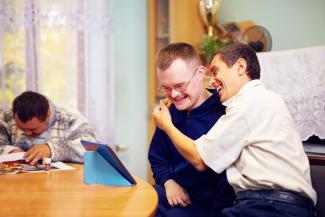
Treatment
While there is no cure or treatment for Down’s syndrome, it is important to follow early intervention protocols to manage the development challenges. It is a disorder that a person will have all of his or her life.
Down’s syndrome is not contagious, and it affects all races and nationalities. No one can “get” Down syndrome later in life. Doctors cannot pinpoint why this extra or altered chromosome problem happens, but they know that it is not the result of what the mother or father does before the child is born. Any parent can produce a baby with Down’s syndrome, but doctors do know that the older the mother, the greater the risk.
Read the Management of Down's Syndrome section to find out more about early intervention protocols and therapies.









